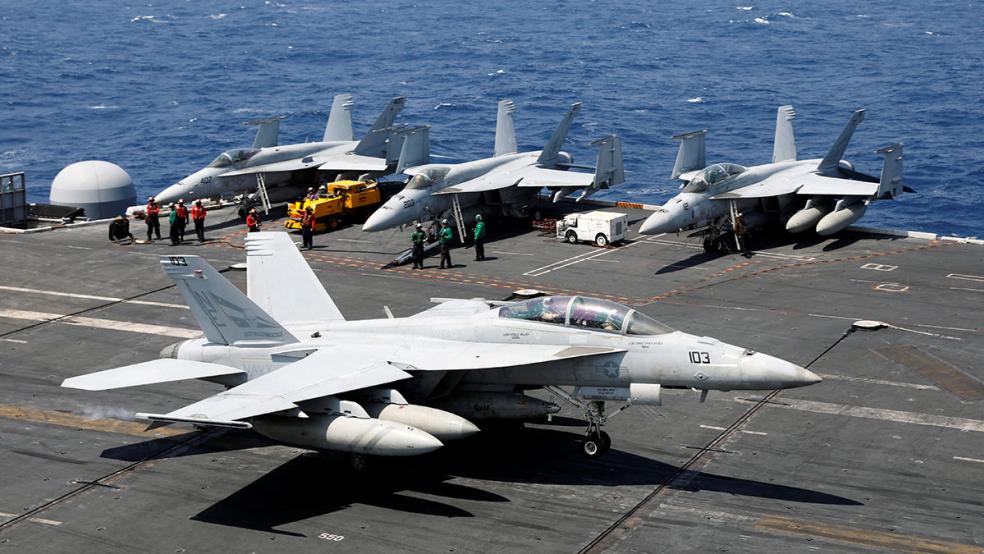For the decade that ended with 2016, the United States’ two major geopolitical rivals doubled their spending on defense, a new analysis from the Stockholm International Peace Research Institute shows. That only leaves them several hundred billion dollars per year behind what the US spends.
Between 2007 and 2016, China increased the amount it spends on defense each year by 118 percent, to $215 billion, and Russia over the same period increased its military spending by 87 percent to $69.2 billion, the SIPRI report states.
Related: With Yet Another Software Glitch, Can F-35 Fighters Roll Out Fast Enough?
But as an indication of the extraordinary amount of money the U.S. pours into the Pentagon each year, they still spend less than half of what the Pentagon gets from U.S. taxpayers every year. In 2016, the US spent about $611 billion on defense, according to SIPRI estimates -- more than China, Russia, Saudi Arabia, France, the UK, Japan and Germany combined.
Because the U.S. no longer has large forces deployed to Iraq and Afghanistan, the military spending as a percentage of GDP has fallen since 2010. However, President Trump has promised a “massive” military buildup that, if enacted, will inevitably drive that percentage higher again.
The study bears out Trump’s complaint that America’s allies in NATO are, by and large, not living up to their commitment to spend 2 percent of GDP on defense. France is the only large country that meets the goal, dedicating 2.3 percent of its economic output to defense. The UK, sitting at 1.9 percent, comes close.
But Germany, despite increases under Chancellor Angela Merkel, remains at about 1.2 percent. Italy, though it spends considerably less than either Germany or Fran, still dedicates 1.5 percent of its GDP to the military.
The Baltic countries Latvia and Lithuania, both NATO members, were among the countries with the largest increases in military spending between 2015 and 2016 with their defense budgets increasing by 44 percent and 35 percent respectively.
It’s no coincidence that both countries -- former Soviet Socialist Republics -- border on Russia, which has become increasingly aggressive toward its neighbors. (Latvia borders on Russia to its east. Lithuania’s Russian frontier is actually to the west with the Kaliningrad enclave, a Russian possession cut off from the remainder of the country, but armed with missile batteries and Russian Naval and ground troop deployments.)






